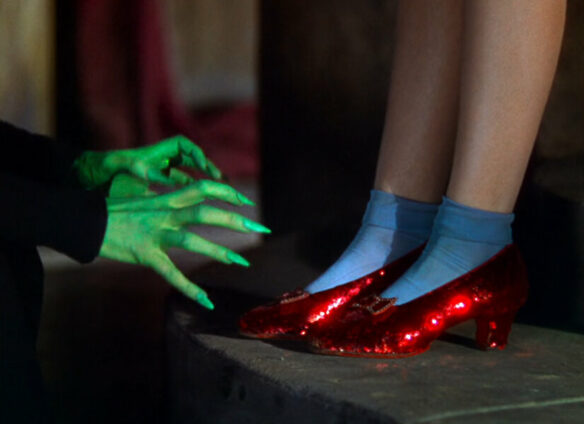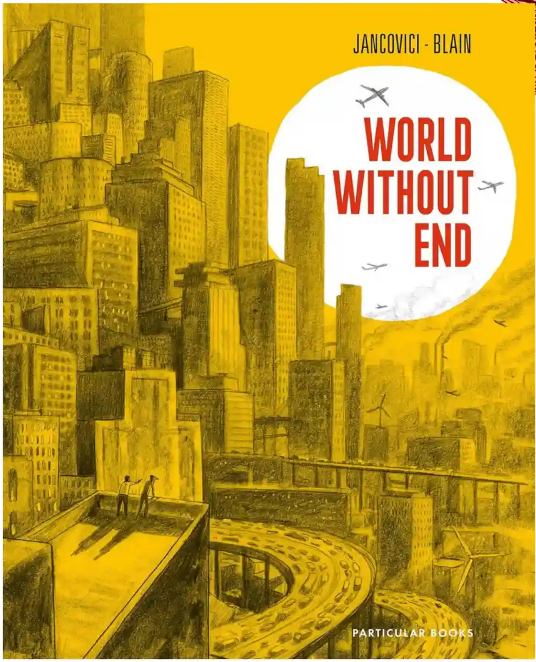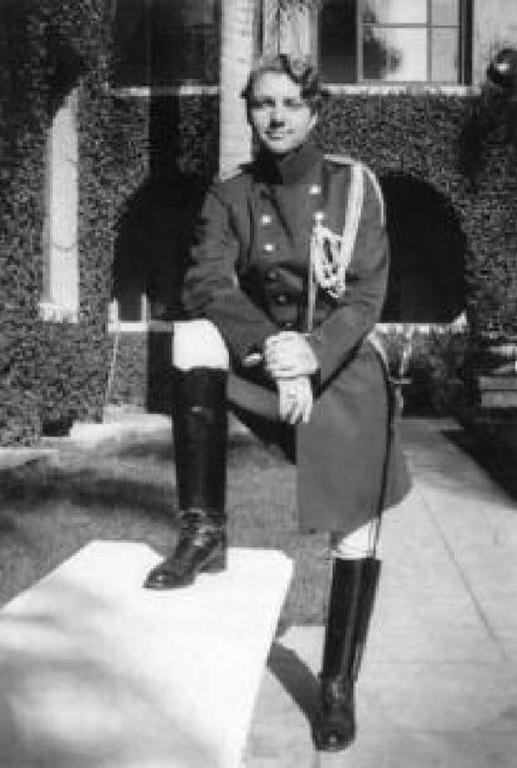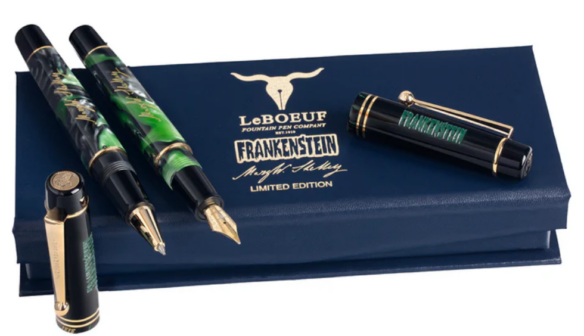(1) THEY FOLLOWED THE YELLOW BRICK ROAD. The Hollywood Reporter listens to the gavel bang when the “Ruby Slippers from ‘The Wizard of Oz’ Sell for a Record $28 million”. (The Wicked Witch’s hat sold, too.)
A pair of the ruby slippers worn by Judy Garland in 1939’s The Wizard of Oz fetched an all-time auction record for entertainment memorabilia when they sold on Saturday afternoon for $28 million. The sale was handled by Dallas-based Heritage Auctions. With the buyer’s premium, the total is $32.5 million, and the buyer currently remains anonymous.
Auctioneer Mike Sadler announced at the podium at the conclusion of the lot’s bidding that the slippers had far surpassed the previous auction record of $5.52 million for the white halter dress designed by William Travilla and worn by Marilyn Monroe in 1955’s The Seven Year Itch. That costume also was sold at Heritage in 2011 and was part of the famed collection of Debbie Reynolds….
… Three other pairs of ruby slippers are known to exist. One pair resides in the National Museum of American History at the Smithsonian Institution in Washington, D.C., while in 2012 Leonardo DiCaprio and Steven Spielberg led a consortium of buyers to purchase a pair of ruby slippers, for a reported $2 million, to reside in the permanent collection of the Academy Museum of Motion Picture Arts & Sciences. A third pair is believed to be owned by a private collector….
… Also sold on Saturday: a witch’s hat worn by Margaret Hamilton, who played the Wicked Witch of the West in the Victor Fleming-directed film based on the beloved L. Frank Baum story. The black pointed hat, which was screen-matched to Hamilton’s first scene as the Wicked Witch in the film, sold for $2.93 million with buyer’s premium….



(2) THOSE GREAT EXPECTATIONS. Works in Progress presents “The world of tomorrow”, where Virginia Postrel asks, “When the future arrived, it felt… ordinary. What happened to the glamour of tomorrow?”
… In the twentieth-century, ‘the future’ was a glamorous concept.
Joan Kron, a journalist and filmmaker born in 1928, recalls sitting on the floor as a little girl, cutting out pictures of ever more streamlined cars from newspaper ads. ‘I was fascinated with car design, these modern cars’, she says. ‘Industrial design was very much on our minds. It wasn’t just to look at. It was bringing us the future.’
Young Joan lived a short train ride from the famous 1939 New York World’s Fair, whose theme was The World of Tomorrow. She went again and again, never missing the Futurama exhibit. There, visitors zoomed across the imagined landscape of America in 1960, with smoothly flowing divided highways, skyscraper cities, high-tech farms, and charming suburbs. ‘This 1960 drama of highway and transportation progress’, the announcer proclaimed, ‘is but a symbol of future progress in every activity made possible by constant striving toward new and better horizons.’
‘All I wanted to do,’ Kron says, ‘was go into the World of Tomorrow.’ She wasn’t alone. Anticipating a bright future was a defining characteristic of the era, especially in the United States.
When Disneyland opened in 1955, Tomorrowland embodied the promise of progress. A plaque at the entrance announced ‘a vista into a world of wondrous ideas, signifying man’s achievements . . . a step into the future, with predictions of constructive things to come.’
Back then, the Year 2000 and the Twenty-first-century were glamorous destinations….
(3) YOU’RE FROM THE SIXTIES! Dwell analyzes “How ‘Star Trek’ Helped Make Midcentury-Modern the Signature Sci-Fi Aesthetic”.
When Star Trek first premiered in the mid-1960s, it was meant to portray a far-off future, with Captain James T. Kirk and Mr. Spock traversing the universe 300 years hence. While the sci-fi television series has come to be recognized for many things in the decades since, like having the first Black female leading character on network TV, a king’s ransom of spin-offs, and an extremely dedicated global fan base, another major aspect of its legacy is its space-age-inspired visual identity that helped shape the intersection of midcentury modernism and what consumers see as “futuristic design,” even now.
While the show’s aesthetic choices were partially practical—its Warren Platner arm chairs and Stemlite lamps were the types of pieces set designers could snag from Los Angeles–area stores that looked more futuristic than grandma’s old divan—they also presented a sleek, nontraditional look that encapsulated the spirit of technological innovation and utopian vision that characterized midcentury modernism. By using something like Eero Saarinen’s 1950s Tulip chair (or, more accurately, a Maurice Burke–designed knockoff, which was more cost-effective at the time, and which the Star Trek crew then modified) the set designers could convey an alien future without having to create pieces from scratch….
(4) EATING THE FANTASTIC. Scott Edelman invites listeners to share scallops with R. S. A. Garcia in Episode 242 of the Eating the Fantastic podcast.
Garcia won both the Nebula Award and the Theodore Sturgeon Memorial Award for her short story “Tantie Merle and the Farmhand 4200,” published in Uncanny, and was a Nebula finalist the previous year as well for her novella “Bishop’s Opening,” which appeared in Clarkesworld. She is also the winner of the MIFRE Media Award, and a Sturgeon, Locus, Ignyte and Eugie Foster Award finalist. Her short fiction has appeared in venues such as Escape Pod, Strange Horizons, and Internazionale Magazine, as well as a number of anthologies, including the The Best of World SF, The Best Science Fiction of the Year, and The Apex Book of World SF.

Her Amazon bestselling science fiction mystery, Lex Talionis, received a starred review from Publishers Weekly and the Silver Medal for Best Scifi/Fantasy/Horror Ebook from the Independent Publishers Awards. Her sci-fantasy duology, beginning with The Nightward, was published by Harper Voyager US in October, plus The Unbearable Taste of Fruit and Wine will be out next Valentine’s Day from Android Press.
We discussed how the idea for her Nebula-winning short story caused her to leap up and walk out of a writing workshop, how editor Ellen Datlow’s advice changed her life, why writing is a verb, not an adjective, the way she decides whether or not to rise to the occasion of a themed anthology invite, her convoluted journey in finding an agent to negotiate her first novel sale even though there was already an offer on the table, why there are some rejections you should be grateful for, how Sigourney Weaver’s role in Alien inspired the sorts of stories she wanted to tell, the Easter eggs in her fiction only a Trinidadian would get, how and why she’s a complete pantser, the importance of community as well as the danger of it disappearing, her hope that readers get even more from her fiction upon rereading, and much more.
(5) SHARPER THAN A SERPENT’S TOOTH. “Replica Harry Potter swords recalled for breaking weapons law” reports BBC.
Replicas of a sword featured in the Harry Potter film franchise have been recalled in Japan for violating the country’s strict weapons law.
The full-sized replicas of Godric Gryffindor’s sword – which measure 86cm (34 inches) and are affixed to a wooden display plaque – were sold by Warner Bros. Studio Japan LLC from May 2023 to late April of this year.
But it was only in November that authorities told the company those pieces were sharp enough to be categorised as an actual sword.
More than 350 replicas of Godric Gryffindor’s sword were sold, reports add, with each one going for 30,000 yen ($200; £158).
The sword was sold at the Warner Bros. Studio Tour Tokyo: The Making of Harry Potter, which opened in 2023 in Tokyo. It is billed as the first such studio tour in Asia and the largest indoor Harry Potter attraction in the world.
Warner Bros. Studios Japan LLC has published a recall notice for the sword on its site, citing “a distribution issue in Japan” and requesting people who bought it to get in contact for “necessary action including logistics and refund”….
(6) GRAPHIC NOVEL ROUNDUP. [Item by Steven French.] Some genre related riches here! “The best graphic novels of 2024” in the Guardian. The list includes:
…One of the year’s most talked-about releases, World Without End (translated by Edward Gauvin, Particular), outsold Astérix in its native France. Artist Christophe Blain walks us through climate expert Jean-Marc Jancovici’s urgent explanation of economic progress, sustainability and global warming in a book that’s statistics-packed but – thanks to Blain’s deceptively jaunty, eye-opening visuals – brilliantly accessible….

(7) TEN BEST SFF BOOKS OF YEAR. New York Times columnist Amal El-Mohtar names “The Best Science Fiction and Fantasy Books of 2024” (gift link bypasses paywall).
Of the many great books I read this year, the following 10 have stayed with me, undergirded my thoughts as I go about my days and provoked excellent, chewy conversations about craft and pleasure, empire and resistance. While I’m a little haunted by the violence publishers seem to be doing to the very concept of a series — claiming sequels are stand-alones, while insufficiently supporting and labeling the parts of actual series — I hope you find something to enjoy among these fantastic works.
This list begins with –
The Book of Love By Kelly Link
“The Book of Love” is a landmark, the kind of fantasy novel that has its own gravity and distorts the genre terrain around it. Set in a small town called Lovesend, it tells the story of teenagers who return from the dead and must compete to remain alive by completing magical tasks. A tender tribute to romance novels, fairy villains and fairy lovers, “The Book of Love” does justice to its name.
(8) SEASON INNIE, SEASON OUTIE. Apple TV+ has dropped the Severance — Season 2 Official Trailer. Season 2 premieres January 17.
In Severance, Mark Scout (Adam Scott) leads a team at Lumon Industries, whose employees have undergone a severance procedure, which surgically divides their memories between their work and personal lives. This daring experiment in “work-life balance” is called into question as Mark finds himself at the center of an unraveling mystery that will force him to confront the true nature of his work… and of himself. In season two, Mark and his friends learn the dire consequences of trifling with the severance barrier, leading them further down a path of woe.
(9) TODAY’S BIRTHDAY.
[Written by Cora Buhlert.]
Born December 7, 1915 — Leigh Brackett. (Died 1978.)
By Cora Buhlert: I first became aware of Leigh Brackett via her contribution to the screenplay for The Empire Strikes Back, during a time when I sought out everything that anybody involved with Star Wars had ever done or been influenced by. That way, I found some very good works, some not so good ones and some which were frankly baffling. Leigh Brackett definitely belongs to the first category.
According to interviews later in life, Leigh Brackett discovered her love of both science fiction and writing in 1923 at the age of eight, when she read The Gods of Mars by Edgar Rice Burroughs. The novel blew her mind and set her on the path to becoming a science fiction writer. It’s probably no accident that so many of her stories would be set on a Mars that was not that far removed from Burroughs’ Barsoom. Meanwhile, the foundation for Leigh Brackett’s later career as a screenwriter were laid during her time at a private girls’ high school, where she penned plays for the theatre group.

In 1939, Leigh Brackett joined the Los Angeles Science Fiction Society and befriended such current and future luminaries as Robert A. Heinlein, Ray Bradbury, Henry Kuttner and C.L. Moore. Kuttner and Moore not only supported her fledgling career, but also introduced her to Edmond Hamilton, who was eleven years her senior and already a pulp science fiction veteran. The two started dating and married in 1946. Ray Bradbury was the best man.
Leigh Brackett broke into the science fiction magazines with “Martian Quest”, which appeared in the February 1940 issue of Astounding Science Fiction. Two more stories for Astounding followed in 1940 and 1942, but Leigh Brackett did not get along with John W. Campbell (neither did Edmond Hamilton) and so took her talent to magazines that were more suited to the type of adventure packed planetary romance that Brackett excelled at. Planet Stories published some of her best-known stories, but her work also appeared in Startling Stories, Thrilling Wonder Stories, Amazing Stories, Weird Tales and other magazines of the era. By the late 1940s, Leigh Brackett was known as “the Queen of Space Opera”.
Most of her stories were set in a version of our solar system that never was, where Mars was a dying desert world littered with ancient ruins, Venus was a mist-shrouded tropical ocean world, Mercury was a tidally locked hellhole and Earth was hellbent on colonizing the rest of the solar system. Leigh Brackett’s work belies claims that the science fiction of the golden age was exclusively white, male, racist and colonialist. Brackett’s protagonists were often outsiders – drifters, outlaws, drug addicts – and several of them, most notably Eric John Stark, were not white. The women were alien temptresses or interplanetary Girl Fridays, but always formidable. Her takes on Mars and Venus were dripping with atmosphere and often melancholic and particularly her early stories were often critical of colonialism and imperialism and how they impact the indigenous population. In her 1944 novel Shadow Over Mars, the evil corporation that operates slave mines on Mars is called the Terran Exploitation Company, a rare case of truth in advertising.
Leigh Brackett’s science fiction often has a certain noir sensibility and so it’s no surprise that she also started writing hardboiled crime fiction. Her 1944 crime novel No Good From a Corpse brought her to the attention of Howard Hawks who hired her to co-write the screenplay for The Big Sleep, kickstarting her screenwriting career which led to penning the scripts for such cinematic classics as Rio Bravo, El Dorado, Hatari and The Long Goodbye. Her screenplay draft for The Empire Strikes Back was very much the capstone of Leigh Brackett’s career both as a science fiction and screenwriter – especially since her work influenced both Star Wars and Indiana Jones – and it’s only fitting that the movie is dedicated to her memory. It also won her a posthumous Hugo Award, her first, even though she was nominated as early as 1956 for her post-apocalyptic novel The Long Tomorrow as the first ever female Hugo finalist along with her friend C.L. Moore.
Leigh Brackett was one of the most important science fiction writers of the golden age. But the fact that the majority of her stories appeared in what were considered second tier magazines (they weren’t, but that’s a story for another day) is also why her stories was less reprinted and remembered than they should have been. By the time, I became interested in her work in the late 1980s, all of it was out of print and I had to hunt down yellowing paperbacks in used bookstores. As a result, the first thing by Leigh Brackett that I actually read – though I had seen several of the movies for which she wrote screenplays – was the Skaith Trilogy from the mid 1970s, where Leigh Brackett revisited her most famous character Eric John Stark and sent him to a distant dying star, since the Mars and Venus he’d roamed in the 1940s had long since been debunked by the Mariner space probes. The novels were good enough that I wanted to read more, but not as good as her stories from the 1940s.
In many ways, Leigh Brackett was a victim of bad timing. The planetary adventures on which she’d built her career fell out of fashion by the 1950s and her markets died off one by one. L. Sprague De Camp considered hiring her to write new Conan adventures, but went with Lin Carter instead (Oh, what might have been). And Leigh Brackett died too young, aged only 62, to take advantage of the space opera resurgence in the wake of Star Wars. But she will forever remain the Queen of Space Opera.

(10) COMICS SECTION.
- Off the Mark fell short of the goal.
- Pearls Before Swine rolls the bone.
- Sherman’s Lagoon finds a spacecraft.
- Bliss updates a classic.
(11) THIS JOB IS NOT THAT F#%$! EASY. Invincible Season 3 arrives February 6 on Prime Video — first three episodes that day, then weekly through March 13.
Based on Robert Kirkman’s award-winning comic book series, Invincible follows 19-year-old Mark Grayson, as he inherits his father’s superpowers and sets out to become Earth’s greatest defender, only to discover the job is more challenging than he could have ever imagined. Everything changes as Mark is forced to face his past, and his future, while discovering how much further he’ll need to go to protect the people he loves.
(12) FRANKENSTEIN IS THE PEN’S NAME. LeBoeuf Pens will be happy to sell you The Mary Shelley Frankenstein Limited Edition Fountain Pen for the monstrous price of $225.

But if money is no object for you, immediately order this most elaborate Montegrappa Universal Monsters Fountain Pen – Frankenstein (Limited Edition) — $6200 from Atlas Stationers. Did you ever see such a desk set? Talk about impressive!

(13) EARLY BIG MEALS. [Item by SF Concatenation’s Jonathan Cowie.] The cover story in this week’s Science Advances journal relates to ancient N. American diets. Although it has long been recognised that the Clovis peoples of North America (13,000 to12,000 years ago) hunted consumed megafauna such as the mammoth, controversy continued about whether they specialised in these species or if they had a broader diet. Using stable isotopic analysis of the remains of the 18-month-old Anzick-1 child researchers reconstructed his mother’s diet and found that mammoth was the largest contributor to it, followed by elk and bison. They then compared her diet with those of carnivores from the region and found that it was closest to that of the now-extinct scimitar-toothed cat, which specialized in hunting mammoths. The researchers suggest that this focus on mammoth procurement facilitated the rapid spread of Clovis culture.
Research here: “Mammoth featured heavily in Western Clovis diet”.

(14) SINGULAR SENSATION. “Technological Singularity in 7 Years?” – SCIFI.radio doesn’t see it happening.
… WHAT IS THE SINGULARITY ANYWAY?
The Singularity is a theoretical point in the future when technological growth becomes uncontrollable and irreversible, resulting in profound changes to human civilization. Often associated with advancements in artificial intelligence (AI), the Singularity is marked by the emergence of super-intelligent systems capable of surpassing human intellectual capacity in virtually every domain.
WHAT WOULD CHANGE IF THE SINGULARITY HAPPENED?
- Exponential Growth of Technology: Rapid technological advancements, particularly in AI, biotechnology, and nanotechnology, lead to innovations that accelerate progress in unprecedented ways.
- Artificial General Intelligence (AGI): The development of AI systems with cognitive abilities on par with or exceeding human intelligence, enabling them to perform any intellectual task a human can do—and potentially far better.
- Automation and Transformation: Profound shifts in economies, work, and daily life as automation and AI take over increasingly complex tasks, rendering many traditional human roles obsolete.
- Integration with Technology: Potential merging of human biology with technology (e.g., brain-computer interfaces) to enhance physical and cognitive abilities, challenging the definition of what it means to be human.
NOW YOU KNOW THE OUTCOME. DO WE LOOK CLOSE TO YOU?
We are a civilization at war with itself, battling against runaway corporate capitalism, failed democracies, strong-man authoritarian governments springing up all over the planet, three to nine military conflicts of varying degrees taking place all over the planet, runaway climate change effects, microplastics in every ocean and now in the wind raining down on populated areas, diseases that were almost annihilated are running rampant again, deforestation, over-fishing, and climate migration taking place on every continent.
Does this look like a world able to usher in the development of a world-transforming technological breakthrough just as liable to destroy humanity as it is to save it?
(15) IT AIN’T ME BABE. “New York woman blames Star Trek license plates for tens of thousands of dollars in accidental tickets” – CBS New York has the story.
A Long Island retiree says she’s getting traffic tickets from all over the country.
But the thing is, she stopped driving four years ago.
So how could this be happening?
Beda Koorey’s love of Star Trek may be at the root of it all
“These came yesterday from Chicago, speeding tickets. They are $100 each,” Beda Koorey said.
Back in 2020, the Huntington resident surrendered her license plates, sold her car, and stopped driving.
“I don’t have a car. I don’t drive. Those plates were turned in,” the 76-year-old said.
Yet, many walks to her mailbox bring the retiree unwanted surprises.
“They are persistent and they keep sending me tickets,” Koorey said.
Her old custom plates honored Star Trek and had the same number as the Starship Enterprise — NCC-1701.
However, for $15 on Amazon and eBay, some Trekkies have been easily replacing their real plates with the same novelty plates — and getting away with it.
Their accrued tickets from all over the country are being mailed to Koorey.
“Red light, speeding, parking, school zone,” she said, describing the types of tickets she receives.
She also gets hit with E-ZPass tolls.
“I got a phone call from Ohio, a police chief looking for plates because they were involved in a robbery,” Koorey said….
(16) KRUGMAN RETIRES FROM NYT. [Item by Scott Edelman.] Paul Krugman announced his retirement from the New York Times, which caused me to remember I recorded his talk at the 2009 Montreal Worldcon, where he discussed how Asimov’s Foundation Trilogy got him into comics, Charlie Stross, and a bunch of other topics related to us.
(17) THE PDF FILES. Mark Barsotti continues his interview with Paul Di Filippo in this fourth installment: “WRITER PAUL Di FILIPPO ~ ‘I hate talking about myself.’”
[Thanks to Teddy Harvia, Mike Kennedy, Andrew Porter, N., Mark Barsotti, John King Tarpinian, Chris Barkley, Cat Eldridge, SF Concatenation’s Jonathan Cowie, Steven French, and Kathy Sullivan for some of these stories. Title credit belongs to File 770 contributing editor of the day Cat Eldridge.]
Discover more from File 770
Subscribe to get the latest posts sent to your email.

(2) As the sixties proceeded, it looked like it was beginning to happen. That went on until the late seventies, and the eighties, and it all fell flat.
This is not the Real 21st Century, and I want the Real one back, Now, thankyouveddymuch.
(3) And it’s still cool and futuristic. And desired (ask Ellen…)
(4) Thank you, the title of her Sturgeon Award winner just gave me an idea for a short story.
(6) It’s a novel? From the description here, it sounds like non-fiction. And the cover… if there are wind turbines, why the smokestacks? And the incredibly heavy and terrible traffic looks like the DC Beltway…
Birthday, and hell, yes, she should be remembered.
(10) Comics: off the mark sent to a daughter, and Sherman’s Lagoon is mostly wrong – lava lamps were more sixties than late seventies.
(14) Um, “singularity”, as a number of folks have noted, is just a secular apocalypse. sigh Where’s my 21st Century?
(16) So that’s why there’s been no new columns. And THANK YOU, I’ve been meaning to watch that conversation, which I missed, for years.
(3) That’s a bit of clickbait that overstates Star Trek’s design influence. The aesthetic was already around at least since Flash Gordon and the 1939 World’s Fair. You see it in the classic pulp covers and illustrations. It was in the googie architecture of Southern California. It was already on television just a few years before Star Trek on The Jetsons.
via, GRRM, RIP Trent Zelazny
@mark
lava lamps have been used as random-number generators.
(2) The timeline does seem a bit dull on the surface, doesn’t it? But this future checks off a lot of my original expectations. I have a watch that monitors my health, a car that tells me what to do, face-to-face communications all over the world, and single-wheel electric cycles that zoom down the streets beside me (and occasionally almost over me). And lots of rockets.
For better or worse, the future is here, just not as shiny and Art Deco as I’d hoped.
I’m almost here.
But not quite.
(9) Nicely done. More from Cora Buhlert, please .
PJ: And? Yes, I do have one, why do you ask?
2) Just goes to show–no matter where (or when) you go, there you are.
3) Mark is correct. If I could afford it, our house would have mostly modern Mid-century furniture. My parents collected several pieces over the years, and I have a few, but I still dream of getting an Eames Lounge chair and ottoman. Sadly, my brother got my dad’s chair. With six kids, the furniture was divided between each of us.
@mark: yes. Especially since the Singularity got its own devil figure (Roko’s Basilisk) it’s clear a secular apocalypse.
(12). In fountain pen terms $225 isn’t that much for a pen—that’s the current online price range of the Lamy 2000, which is widely considered to be a next-level pen. (That is, the type of pen one frequently moves on to after testing the waters with an entry-level pen like the Pilot Metro or the Lamy Safari.) I wouldn’t buy it myself because aside from not having that kind of money I am not fond of green and I haven’t read the book. (And why are they playing coy about who is supplying the nibs?) For a fountain pen user who was a big fan of Shelly I could see the attraction.
IMHO, the less said about Montegrappa the better.
I’ll get you, my pixel, and your little scroll too!
When I was somewhat younger I saw two films that greatly affected my sense of aesthetics. “Things to Come,” and “The Wizard of Oz.” For me, the Future will always be Deco (though the term was not invented until much later.) The utilitarian boredom of Mid Century Modern, on the other hand, will always conjure for me the cheap motels I stayed in while crossing America.
(16) Krugman got me back into fandom. I had mostly GAFIATED when of his columns in the NY Times recommended the work of Charles Stross, who I had at that point not heard of. Dr. Krugman is also super nice — I got to interview him in Edmonton in 2007.
JohnDeC: mid-century modern in motels? Not as I remember. Well, there was the Wisconsin Dells that my late wife and I stayed in, in ’96. A kitchenette, with a table that looked like my mother’s from the fifties, and the chairs to match.
Mm that Yellow Brick Road item, this reminds me that aeons ago, I was given a terrible joke re that movie (and since this is the festive season, l’ll now pass it on): Did You Know That “The Wizard Of Oz” is really about domestic science?? Listen: “Somewhere Over the Rainbow, WEIGH a pie..!” (…mega groan…)
Someone recently told me that The Wizard of Oz is the perfect Chick Flick. It’s about two women trying to kill each other over a pair of shoes.
Is Paul Krugman Admits He Writes Whatever It Takes To Get To The Top Of The Most-Emailed List a Mandela effect? Can’t be, I remember reading it like it was yesterday. If classic The Onion is gone please tell me someone preserved the whole thing for posterity, back to the 80s and every single thing they published in print and online.
Pingback: Christmas 2024 | Cora Buhlert
Pingback: A handy guide to all SFF-related posts and works of 2024 | Cora Buhlert